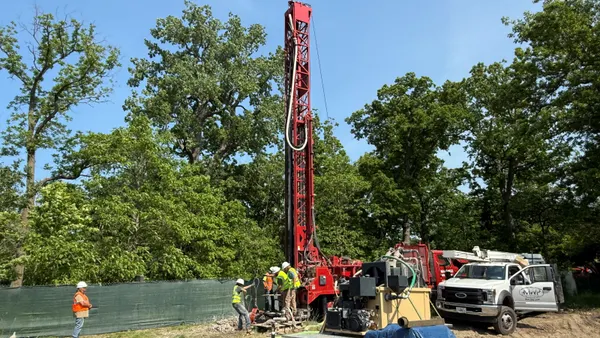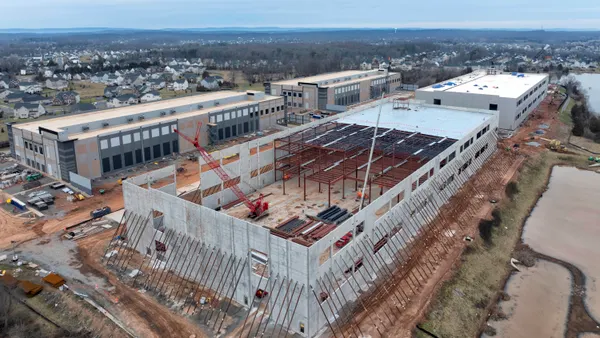The construction industry has been ripe for a significant technology shift for quite some time. Although it has been widely cited that construction is one of the least digitized industries, perhaps more alarming is the lack of clear technology direction that most contractors experience. Many firms struggle with the plethora of digital options as well as finding a viable solution for organizing and applying the vast amount of data produced on every job site. In fact, a 2018 KPMG survey of construction/engineering chief information officers noted that 54% of firms lack a clear digital strategy.
Despite these challenges, a recent USG + U.S. Chamber of Commerce study found that 75% of general contractors use at least one advanced technology, such as drones, augmented and/or virtual reality, equipment tagging, wearable technology, and others.
Because of the variety of technologies on the market covering every point of a project’s life cycle, consumers often struggle with answering these fundamental questions: Where should the focus be? Should it be on implementing advanced technologies, or are we, as an industry, overlooking the fundamentals, which is to use technology to enhance workflows?
With 96% of all data captured in construction/engineering going unused (FMI), it’s time for firms to hone in on technology that uses data to improve their workflows first before rushing to adopt the next generation of tech tools. As the industry moves into the next decade, a technology that enhances insights on the three pillars of construction management — cost, quality and schedule (i.e., time) — will be vital in maintaining a high level of performance, job site safety and the slim, 2% profit margin on most projects. Those projects that cannot maintain a healthy balance among all three categories will not succeed.

“One of the greatest challenges in managing construction projects effectively is having visibility into the true status of cost, schedule and quality,” said Cathi Hayes, vice president solution design, HxGN Smart Build, Hexagon PPM. “If you are focused on managing only one of these aspects, then you do not have a true picture of the health status of your project.”
Leveraging Technology to Enhance Workflows
Construction companies often manage cost, quality and schedule in siloed systems, making real-time insights to make decisions earlier in the process difficult. For project managers, it is essential to have true visibility into a project, because when you don’t, problems occur. This is more common than anyone would like to admit, which is perhaps a contributing factor leading to construction projects being notoriously over budget and behind schedule.
Project managers and construction executives want a solution that can handle the enormous amount of information generated throughout the project life cycle while also facilitating communication among all parties to gain insight and timely feedback.
“Digitization is just the first step. You need an interconnected solution,” Hayes explained. “If you still have digital silos of information, you haven’t solved all the problems because you haven’t actually brought the information together. This is what provides the insight and the ability to better control your projects, the quality, schedule and costs.”
Hayes continued, “An end-to-end interconnected construction management solution can help address a lot of these issues because everyone is working in the same environment.”
With HxGN Smart Build, companies gain visibility of a project throughout the life cycle. Smart Build marries schedule, cost and model data in one interconnected, cloud-based solution for planning and monitoring planned versus actual in near real-time. Advanced work-packaging software solutions, such as Smart Build, allow the construction field and site teams to collaborate, share and map critical information in an automated fashion which leads to improved predictability and enterprise reporting.
Construction companies should look for a technology solution that provides:
Clarity: The technology should give executives a clear line of sight to the entire project by organizing the data and information on a single platform that participants at all levels can access at any time. The solution should automate the process of intelligently linking models, cost and schedule (5D BIM) so that comparing planned versus actual is automated, which provides near real-time insight.
Connectivity: The solution should be cloud-based, with mobile apps for real-time field progress and APIs to connect with external systems. It should seamlessly connect project stakeholders, data and tasks so they can be viewed, measured, analyzed and executed within a single interface. It should be a true end-to-end solution — from planning and execution through hand-over to the building owner.
Simplicity: The technology should be easy to use for the entire construction project team. Users should be able to access it from anywhere from existing devices using a role-based workflow to improve productivity and secure exchange of information across construction teams.
“An interconnected solution is going to be a must for this industry moving forward,” Hayes concluded. “Those that don’t evolve won’t be able to survive in the industry.”
Learn more about Hexagon PPM’s solutions for AEC.










